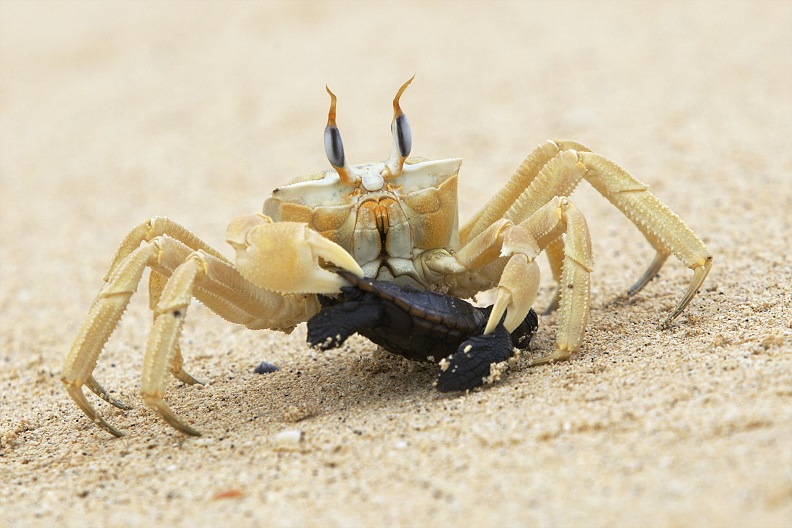Climate change plays a key role in the development and survival of oviparous ectotherms such as sea turtles. Higher environmental temperatures are expected to lead to increased production of female hatchlings and potential feminization of many populations, as well as reduced hatching success and hatchling fitness. This study shows how different sand temperatures affect sea turtle embryo mortality, hatchling phenotype, and hatchling predation during their crawl to the sea. It was conducted in Cabo Verde, the only rookery of the endangered loggerhead turtle (Caretta caretta) in the Eastern Atlantic. During three consecutive seasons (2015–2017), 240 loggerhead clutches were exposed to three different incubation temperature regimes created by different sand colours. The warm treatment (mean = 32.3 °C ± 0.5) killed 33% more embryos than the cold treatment (mean = 29.7 °C ± 0.6). Hatchlings from the warm treatment were mostly females, smaller in size, and had lower performance. Hatchling predation by ghost crabs during seaward transit was higher for hatchlings incubated in the warm treatment. Combining embryo mortality and hatchling predation, the rate of female hatchling arrival at the sea was more than twice as high in the cold treatment (34.4 females per 100 eggs) than in the warm treatment (16.0 females per 100 eggs). This increase in mortality caused by warmer incubation temperatures may cancel any potential benefit of a female-biased sex ratio. Conservation planners should consider behavioural adaptations and the potential dispersal of the nesting areas to colder areas to increase resilience of loggerhead turtles to climate change. informacion[at]ebd.csic.es: Martins et al (2020) Warmer incubation temperature influences sea turtle survival and nullifies the benefit of a female-biased sex ratio. Climatic Change 163, 689–704 (2020). https://doi.org/10.1007/s10584-020-02933-w
https://link.springer.com/article/10.1007/s10584-020-02933-w

 Las altas temperaturas están provocando que las lagunas y las marismas de Doñana pierdan agua rápidamente
Las altas temperaturas están provocando que las lagunas y las marismas de Doñana pierdan agua rápidamente




